
An RV as a Second Home
If you're thinking about retiring and considering escaping the northern cold for a warmer climate, then gather closer for a tale about an extraordinary winter living opportunity.
My wife and I have been second homeowners for thirty years. Living full-time for twenty years in the Vail Valley (the second home was in Denver), we became very conversant in understanding both the culture and economy of the second home market. About half of our neighbors showed up for a month or two in ski season and then came back to stay through the summer.
Intro to super-elite RV resorts
This is not at all unlike the huge RV snowbird migration that swells the population of RV parks and resorts in California, Arizona, Texas and Florida. Throughout the sunbelt states, there are numerous RV parks that fill with trailers, fifth wheels, and motorhomes. Many offer reduced full-season rates. Some allow long-term ground leases for park models. A few have lots you can actually buy. And within that smaller group, there's about a dozen or so super-elite properties that most RVers never hear about.
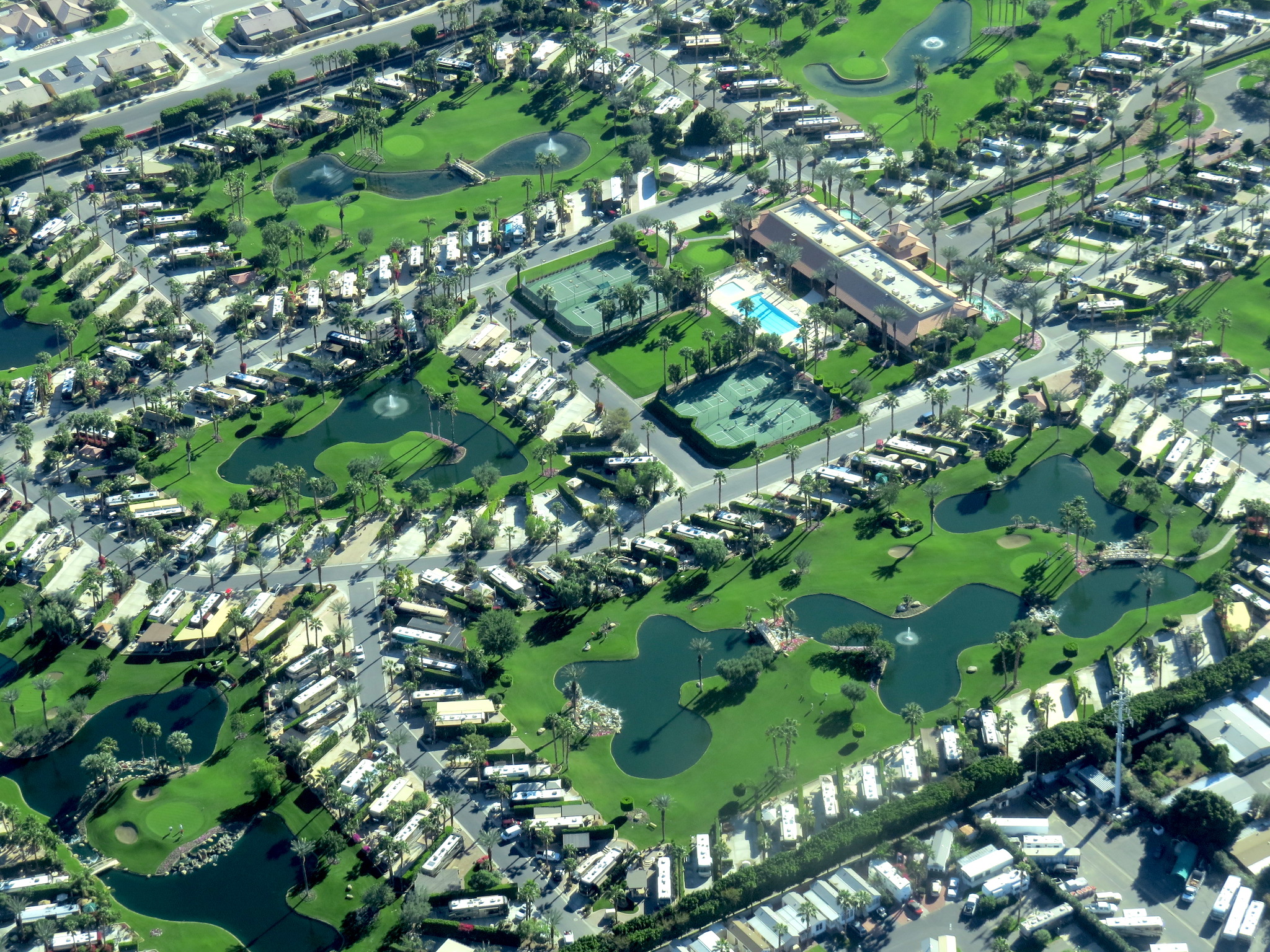 Outdoor Resorts in Indio from the air. Most sites are on the Par 3 golf course.
Outdoor Resorts in Indio from the air. Most sites are on the Par 3 golf course.
In the Coachella Valley (anchored by Palm Springs on the North and Indio on the south) there are four high-end resort ownership properties. At the top of the list is Desert Shores where every lot has a casita, garage, and many have a small pool. Next down is the Motorcoach Country Club, which only allows Class A motorhomes. Across the street is Outdoor Resorts/Indio (ORI), which is also Class A restricted. And about 20 minutes north is Outdoor Resorts/Cathedral City, which allows both motorhomes and fifth wheels.
These properties all essentially work the same way. You purchase a lot (driveway). You then pay a monthly homeowners fee and the requisite utilities and property taxes. Some resorts allow you to improve your lot with enclosures, shade structures and outdoor kitchens. These resorts are highly amenitized with executive golf course, gardens, tennis and pickleball courts, clubhouses, and on-site dining.
Our experience at Outdoor Resorts/Indio
Unlike a traditional resort, there are no garage door openers where you drive into your home, cocoon, and then have limited engagement opportunities with your neighbors. What's great about ORI is it melds country club living with the unique outgoingness of the RV culture. There's a wide range of affluence from comfortable to high net worth, and not a hint of class hierarchy. What you can only tell, after spending a few weeks or months living at ORI, is how lively, active, and inclusive it feels. This culture pretty much eliminates the "starting from scratch" re-establishment of social connections people have when moving to a new community.
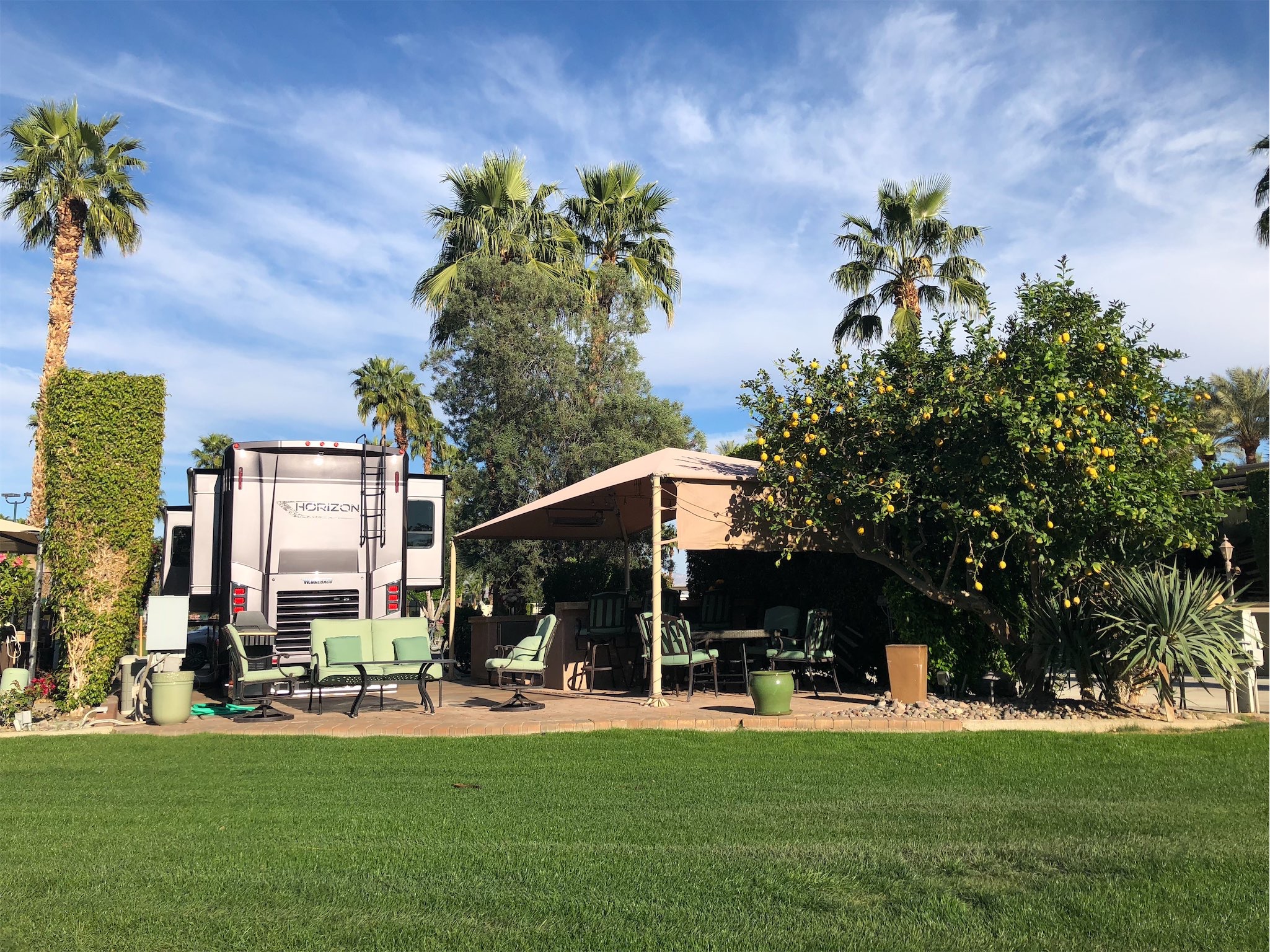 The Horizon at Outdoor Resorts. Fortunately, the only lemon(s) in the photo are on the tree. The new Horizon has been remarkably trouble free.
The Horizon at Outdoor Resorts. Fortunately, the only lemon(s) in the photo are on the tree. The new Horizon has been remarkably trouble free.
We were drawn to Outdoor Resorts because we knew four couples from our old Vail Valley neighborhood who now spend the winters there. With the assignment to live in a new Winnebago Horizon for several months, I knew we had a great place to test it out. Our experience showed me a largely hidden facet of the high-end RV lifestyle and uncovered a really appealing strategy for enjoying luxury for less.
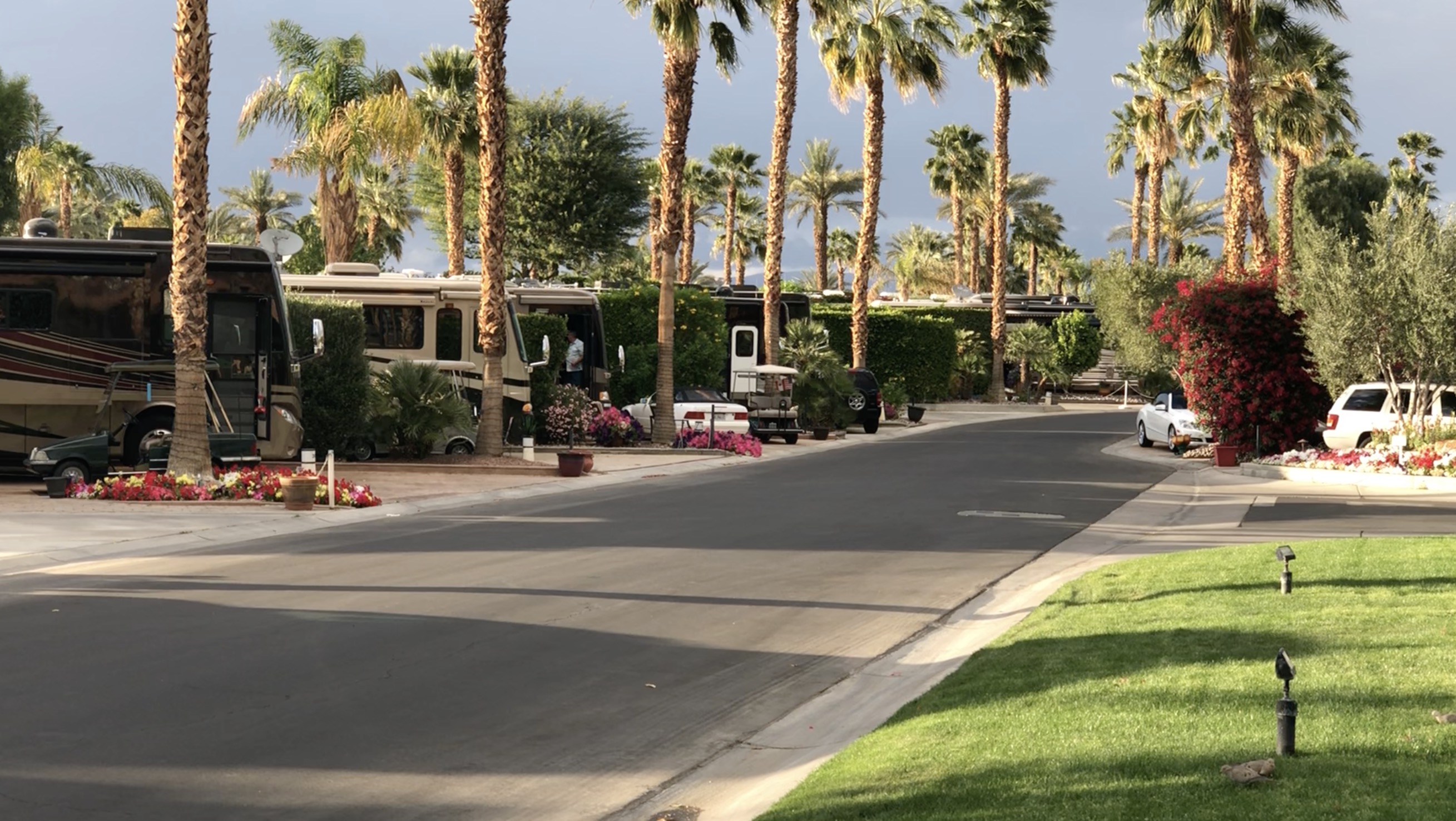 Lots accommodate rigs up to 45' with at least one parked car (many have two).
Lots accommodate rigs up to 45' with at least one parked car (many have two).
Rules, upgrades & investment
The ORI rules are pretty simple. Once you purchase a lot you must have a Class A motorhome that's at least 28 feet in length and less than 10 years old. So yes, a new entry level Winnebago Intent, which you can buy below $100 grand, would qualify. However, most of the rigs you see in ORI are diesel pushers that (new) range from $175,000 to $2,000,000. An unscientific walk through the community seems to indicate that most owners have coaches in the $250,500-$500,000 range. You see Tiffins, Newmars, Prevosts, Entegras, and Winnebagos. You're not required to upgrade your rig after you buy, but the community ethic seems to insure that even older coaches are very well tended to.
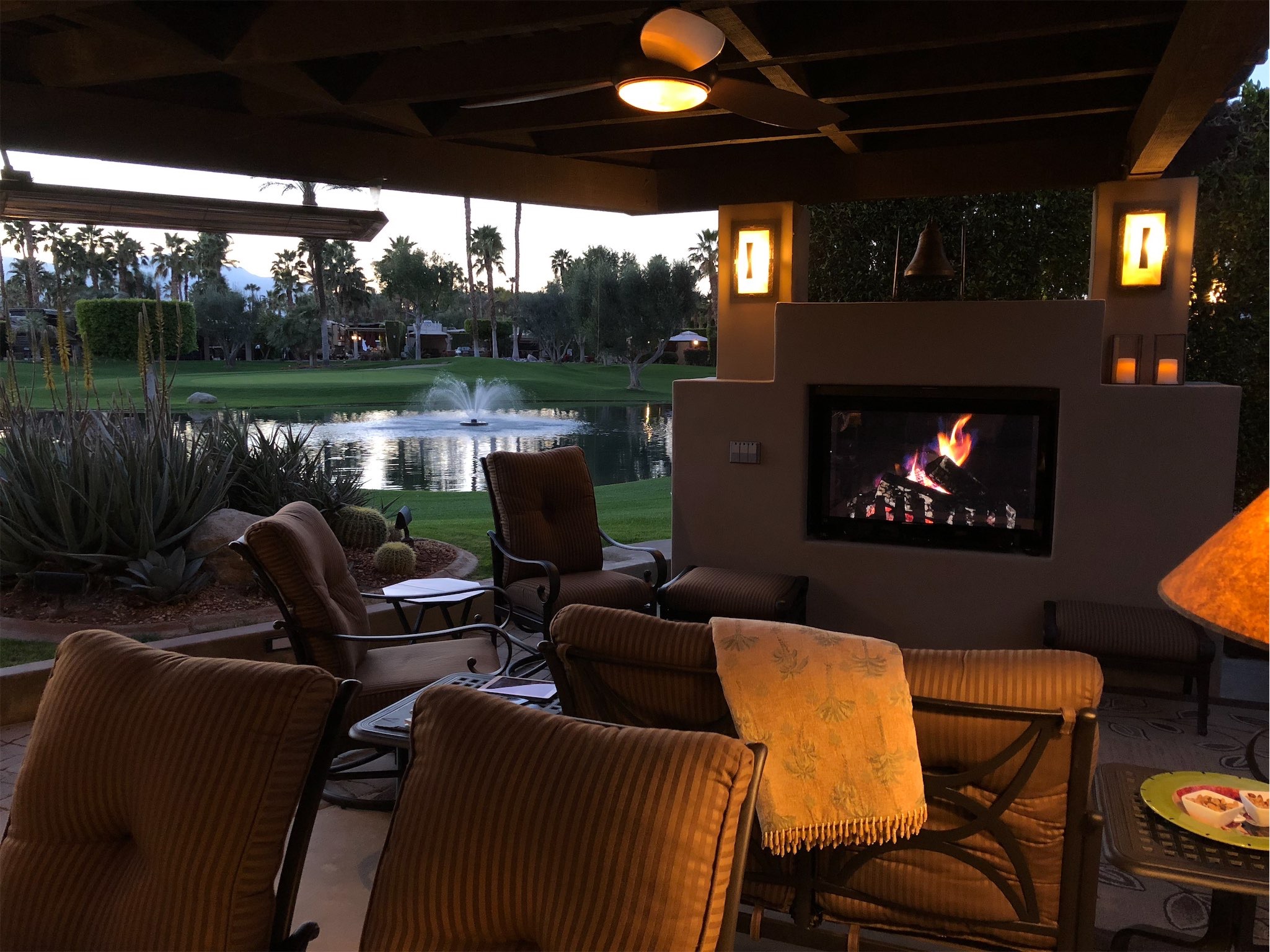 Many owners build enclosed pergolas with electric heaters when the nights get a bit cool. Our friends Dennis and Kathy even had a digital fire video playing one evening.
Many owners build enclosed pergolas with electric heaters when the nights get a bit cool. Our friends Dennis and Kathy even had a digital fire video playing one evening.
Once you've purchased a lot, you then are responsible for the monthly HOA fees. At ORI it's $455 a month. When you add in property taxes and electric, the good rule of thumb is that your annual operating costs will be around $7,000.
There are 419 lots and at any given time about a quarter are up for sale. And here's the thing -- there are some undeveloped lots (no outdoor kitchen) that are on the market for as little as $25,000. To be sure, there's a few that are on the market for over $200,000, but lots that were bought and improved (pre-recession) with over $200,000 in original value can be purchased for $50,000 to $90,000. Many owners have now taken their lots and added permanent pergola structures with full outdoor kitchens, TV cabinets, fireplaces and premium drive surfacing for $75,000 to $100,000.
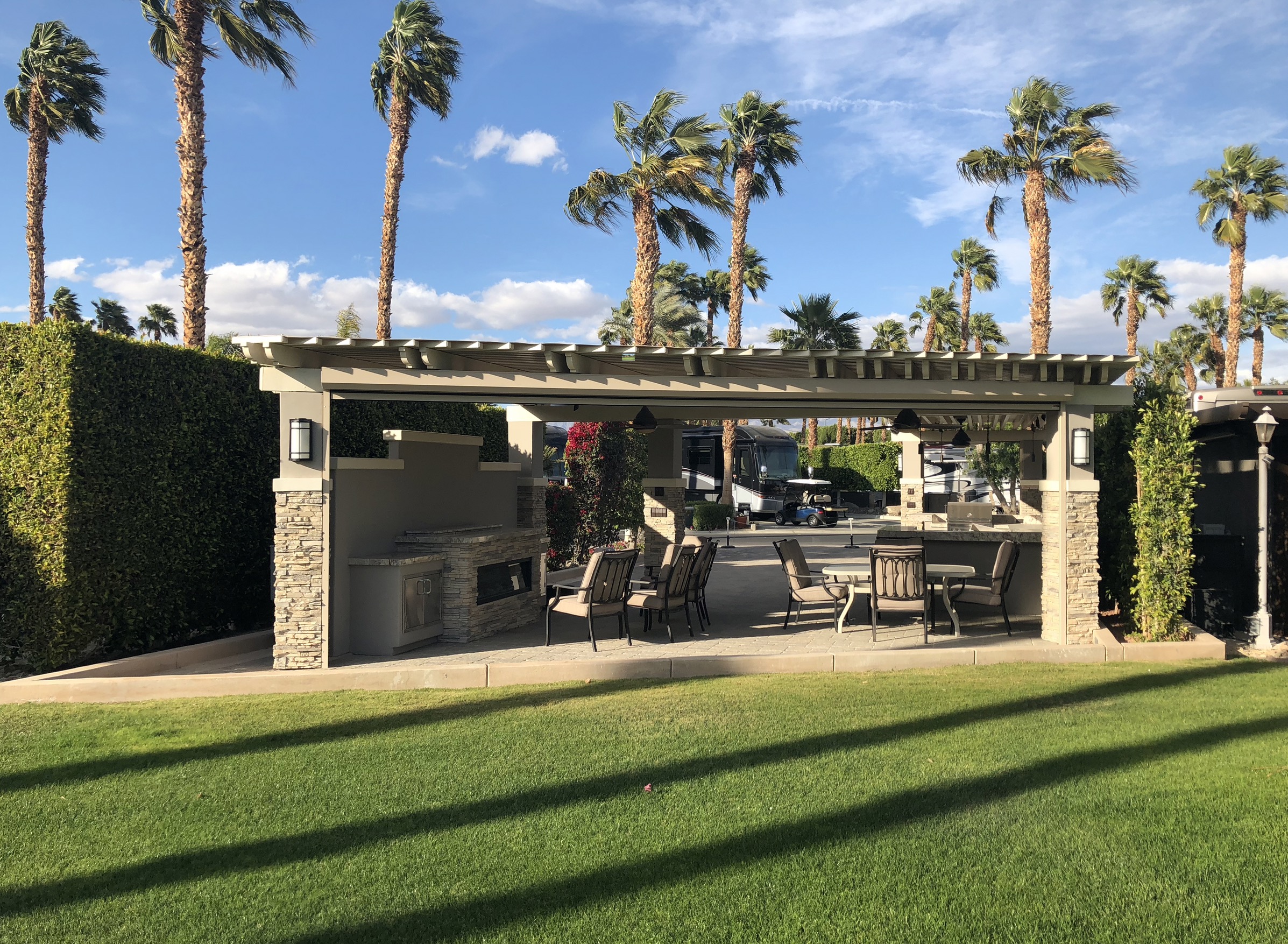 A driveway transformation. Improvements like this one lot can run between $75,000-$100,000.
A driveway transformation. Improvements like this one lot can run between $75,000-$100,000.
You can take a medium priced lot for $75,000, put another $75,000 of improvements on it, add in a near new diesel pusher for $200,000 and find yourself smack dab in the middle of a beautiful resort for $350,000 - and even less if you keep your improvements and motorhome modest. Granted, even this "good deal" may be out of reach for many. However, if your income and savings allows it, this is a very attractive option, especially when you compare it to patio homes built on golf course communities nearby in Indio. Those homes are in the $800K to $1.2M range with all the cost burdens of homeownership and much higher country club fees.
RV resort vs. traditional second home
Second home real estate can be a temperamental beast. The Great Recession hammered all the homes in the Coachella Valley including the RV resorts. Prices dropped by half and while they've recovered, the annual price growth of around 4% is not governed by the wildly inflated SoCal and Bay Area prices you read about. Generally, unless you are in a high-demand second home market, your modest equity gain is probably eroded by maintenance, taxes, and real estate commissions.
Compare traditional resort real estate to the RV resort model and the gap isn't as great as you might think. First of all, your cash outlay for an RV and a lot to park it on will generally be less, assuming a standard 20-25% down payment on a sticks and bricks home. And your carrying and transaction costs will be way less with the RV resort model. Of course on the other side of the ledger, you know that your RV (whether new or lightly used) most likely will have a steep depreciation curve. However, during the 100+ degree summers, you can enjoy your "second home" in cooler climates, only to return when the mercury slides back to pleasantly warm.
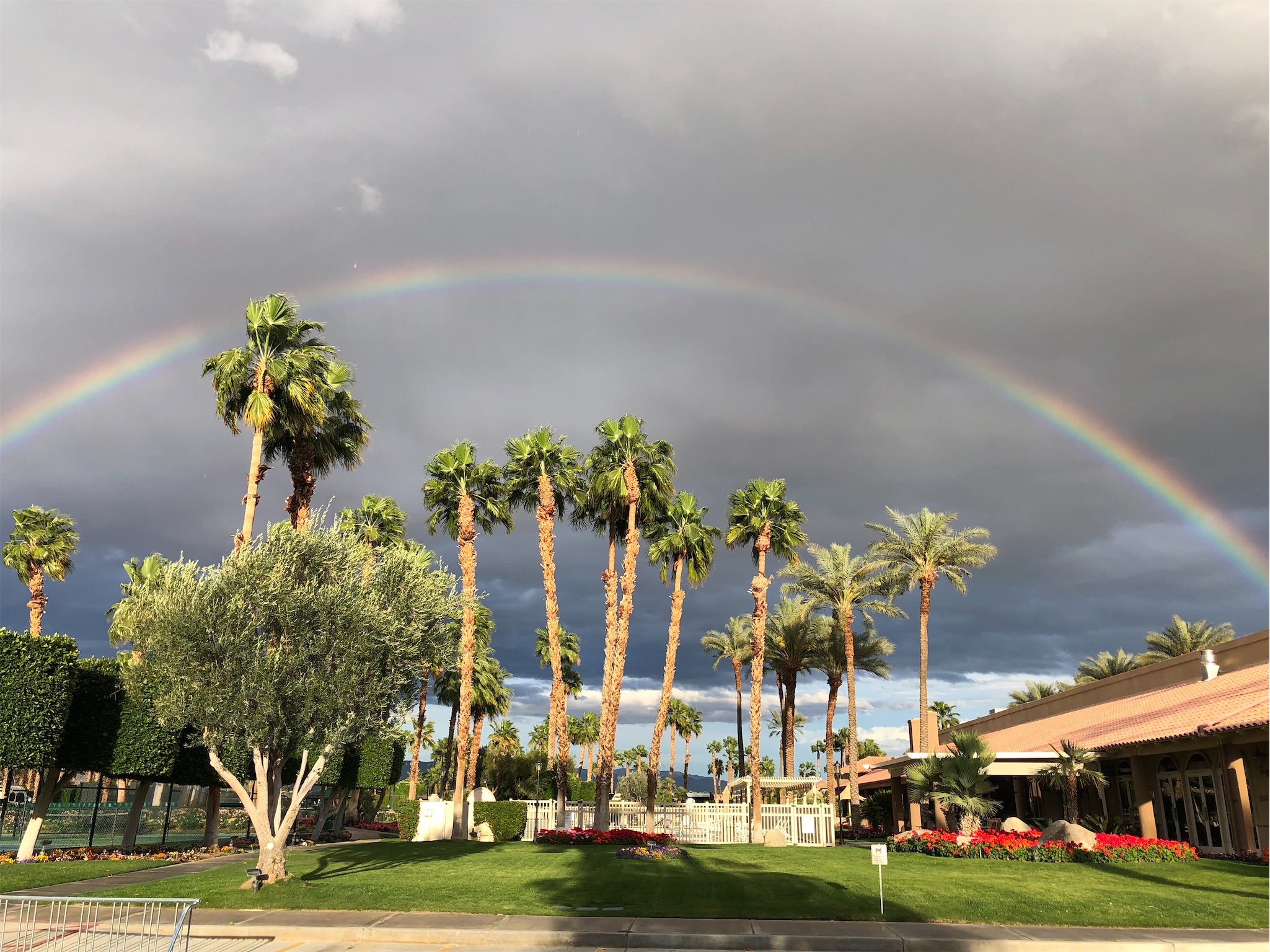 There's gold underneath this rainbow. Pickleball and tennis courts. Putting green, pool, spa, indoor steam/sauna, high-quality exercise equipment, meeting room and owners lounge.
There's gold underneath this rainbow. Pickleball and tennis courts. Putting green, pool, spa, indoor steam/sauna, high-quality exercise equipment, meeting room and owners lounge.
What's interesting is that the original developers of these luxe RV resorts all went bankrupt. Like so many economic white crosses on the side of the RV industry highway, the sales expectations fell significantly short of the huge infrastructure investment required to build this small number of resorts. Today, to build an ORI from scratch, you'd probably have to price lots at $250,000-$500,000 which can't support a market. I'm doubtful if any more will be built. The four high-quality resorts I mentioned have a combined inventory of 2,000 lots for a market area that includes the western halves of the U.S. and Canada. Yet, few know about these properties.
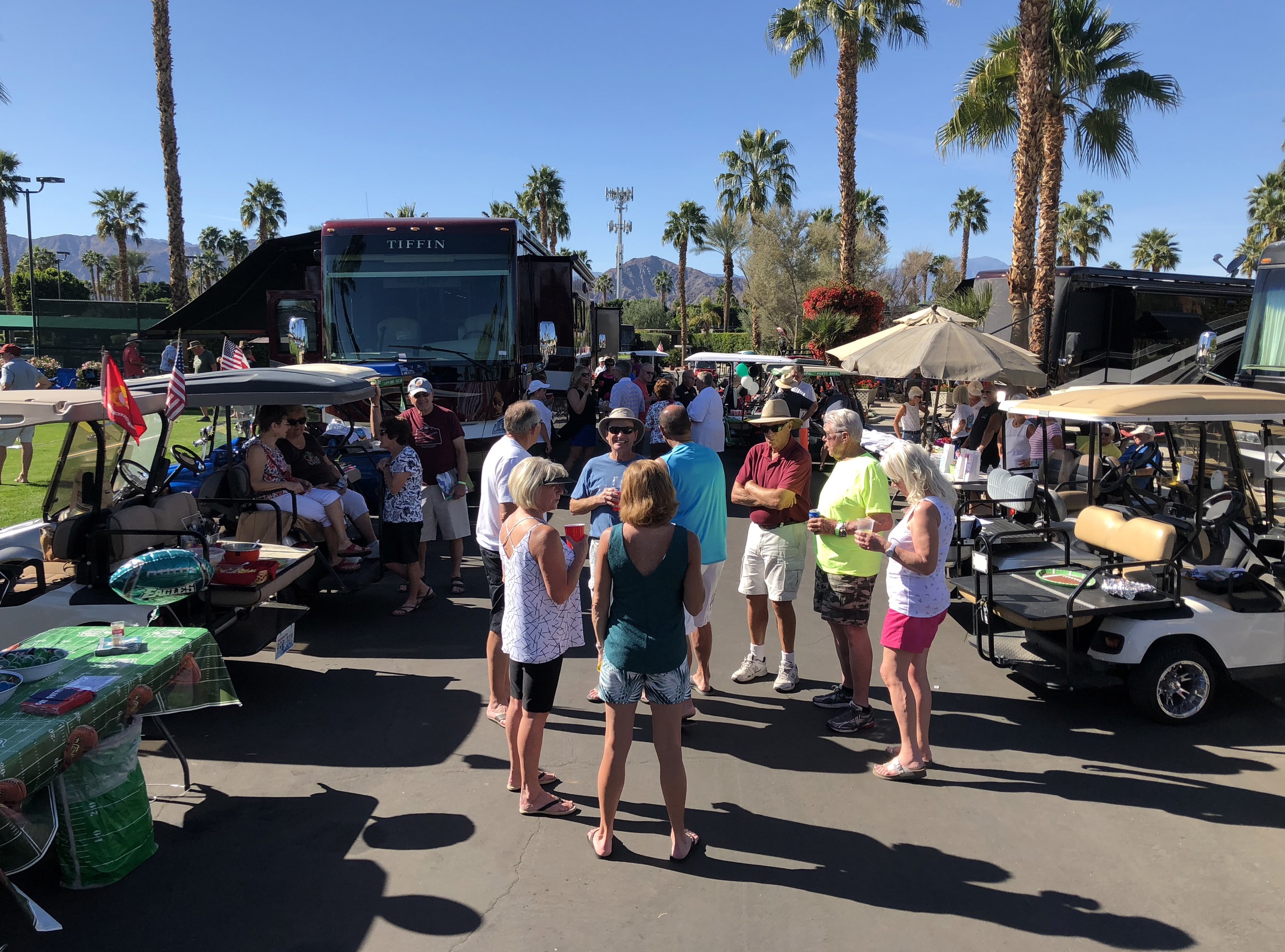 A pre-Super Bowl tailgate party. At 72 degrees that evening, many (like us) watched the game outside on their patios.
A pre-Super Bowl tailgate party. At 72 degrees that evening, many (like us) watched the game outside on their patios.
Talking with many owners at ORI, there is a universal recognition that none of them look at this as an asset play. Their return on their investment converts to fun. And that passion and deep contentment is far more persuasive than the glossiest of brochures.
All of these resorts are homeowner association-owned. Their owners are starting to realize that their valuations are unusually low and are starting to make changes to property policy and marketing to change that. If they're successful, that will definitely push property prices up. Even then, it should remain an extremely attractive option, but for now, it's a downright steal.
Comments
Comments on this post are moderated, so they will not appear instantly. All relevant questions and helpful notes are welcome! If you have a service inquiry or question related to your RV, please reach out to the customer care team directly using the phone numbers or contact form on this page .